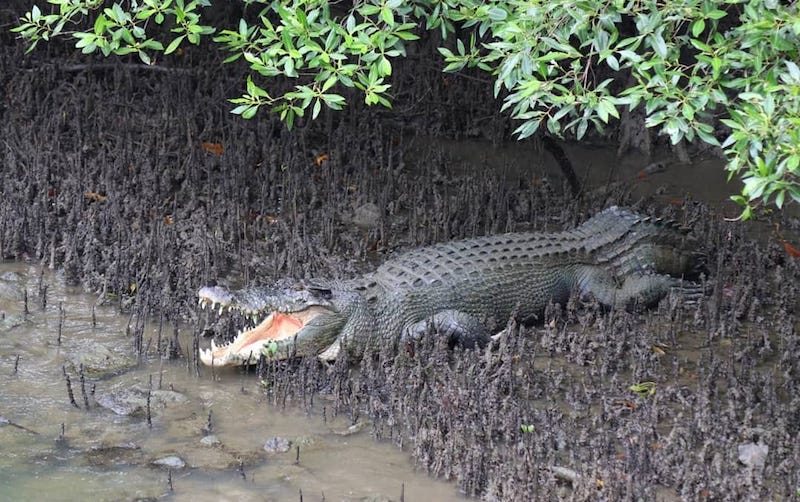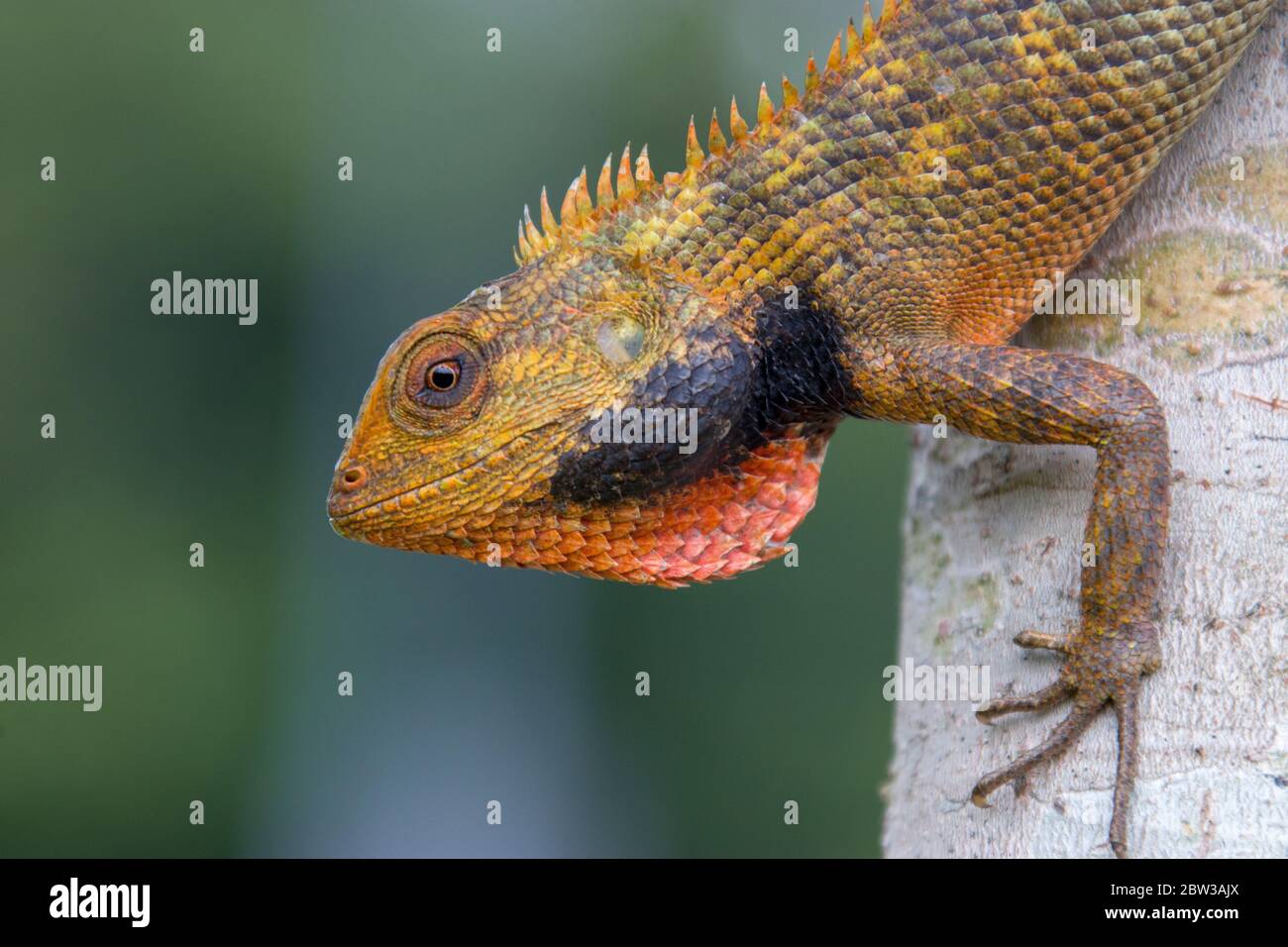Common Animals Found In Sungei Buloh
To explore other areas under the Network visit. NParks warning signboards can found around the reserve informing visitors what to do when they encounter the animal.

Watch Huge Crocodile Spotted Just Hanging Out At Sungei Buloh Wetland Reserve Coconuts
It is often seen in large numbers on the mudflat.

Common animals found in sungei buloh. The Sungei Buloh Wetland Reserve is a world-class eco-tourism experience first discovered in 1986 by a group of birdwatchers from the Malayan Nature Society. The Purple Heron one of the largest birds in Singapore is often seen standing motionless at the water edge waiting for its prey like fishes aquatic animals small reptiles and even insects. The sea holly Acanthus spp is a shrub commonly found growing on mud lobster mound.
Explore a complete list of bird species observations in this area. Catch a glimpse of the wildlife found in Sungei Buloh through these videos. Among the Sungei Buloh Wetland Reserve animals the birds are the chief attraction.
A longer continuous period of observation may yield other species not recorded so far. PETALING JAYA Oct 21 Siti Fauziah Abdul Jabbar may be facing financial constraints but she has not given up on nursing and treating stray animals The 38-year-old from Sungai Buloh told. Hence it is also known as the Four-lined Tree Frog.
Clam Marcia marmorata It lives buried just underneath the mud surface. Sungei Buloh Wetland Reserve is Singapores first ASEAN Heritage Park. In the same year it was recognized as a site of international importance for migratory birds.
Hotspot navigation Show Hotspot navigation. The reptile is most likely an estuarine or saltwater crocodile crocodylus porosus which is a common species to Sungei Buloh. It is also found here in Sungei Buloh Nature park.
On 1 Jan 2002 130 ha of Sungei Buloh was officially gazetted as a nature reserve. When it was subsequently revealed that the government had earmarked sungei buloh for agrotechnology development a group of six clive briffet hails hale rexon ngim ho hua chew and r. Sungei Buloh Nature Park Network Sungei Buloh Wetland Reserve and Kranji Coastal Nature Park former Eastern Extension is part of the Sungei Buloh Nature Park Network.
Among the varieties you can find here the common redshank yellow bittern whimbrel curlew sandpiper cinnamon bittern and others deserve special mention. Story-telling by the Park Find out more about. One of the most common migratory birds found at Sungei Buloh Wetland Reserve between August and April the Common Redshank can be identified by its long bright orange-red legs and relatively long stout bill.
Amazingly both its coloration and markings can change to blend in with its surroundings. Populations of this bird can come from Mongolia Russian Far East and China and they start arriving in Singapore as early as July. Tumu Nipah Plam Tree Common Nerite Api Api Bulu Dog-faced Snake Mud Creeper Golden Web Spider Tree Climbing Crab Cicada Barnacles Blue Glassy Tiger Butterfly Common Sandpiper Little Egret Giant Mudskipper Malayan Water Monitor Saltwater Crocodile.
Some animals insects and plants found in Sungei Buloh Wetland Reserve. Mangrove Horseshoe Crab Carcinoscorpius rotundicauda and Coastal Horseshoe Crab Tachypleus gigas Photo credit. View live scenes of Sungei Buloh here.
Singapore also hosts 395 species of birds 110 reptilian species including 75 snake species and 30 species of amphibians. The area used to be a fish and prawn farm explaining the rich biodiversity unique to this area. Subaraj comprising members of the societys bird group conservation committee put forth a proposal in december 1987 for the creation of a 318-hectare nature.
There are several species of Lycaenidae these are small fast-flying butterflies found at Sungei Buloh which occur in symbiotic relationship with the Kerengga ants. Below is a list of some animals found in Singapore. During the migratory season you can find numerous birds that feed on the mollusks and worms of the park.
Like most shellfish it is a filterfeeder. The Common Tree Frog is light yellowish-brown with four rows of dark brown lines or markings along its back. These are the Common Tit Hypolycaena erylus teatus and the Centaur Oak Blue Arhopala pseudocentaurus nakula.
Butterfly Species observed at Sungei Buloh Nature Park 1999-2000 The total number of species found at Sungei Buloh Nature Park is not exhaustive. Despite its large size it is a herbivore that feeds on algae. For more about the herons at Sungei Buloh.
The SBWR is home to a total of 248 native and naturalised vascular plant species 15 ferns 1 gymnosperm 233 angiosperms. The largest gastropod in Sungei Buloh Wetland Reserve the telescope snail Telescopium telescopium has a distinctive spiral-shaped shell. In our Wildlife Around Singapore series we share interesting flora and fauna that have been sighted around the island.
Sungei Buloh means River of Bamboos in Malay. An animal commonly seen on mud lobster mounds is the tree-climbing crab Episesarma sp which usually dig burrows into the mounds or at the base of trees. Elsewhere crabs mudskippers and mud lobsters can be found in their natural habitats and viewed from a distance at observation posts that dot the park.
Common Tree Frog Otters in Sight Large-Tailed Nightjar Flying Fox Pteropusscapulatus Dusky Encounters at SungeiBuloh Weekend Fishing Survey School Activities at SungeiBuloh Spin Doctor at Work. Sungei Buloh Wetland Reserve and Kranji Marshes are some of the places it calls home. The crocodiles of Sungei Buloh Visitors to Sungei Buloh Wetland Reserve have.
See if you can spot the tracks left behind by these snails. The underside is either white or light grey. Holly Siow Did you know that the Horseshoe Crab has been around even before the dinosaurs.
Some of the animals that visitors come to see at Sungei Bulohs Tidal Ponds include herons kingfishers monitor lizards water snakes and crocodiles. Malayan water monitor in Sungei Buloh Among the many birds that can be spotted feeding on the diverse fauna variety of worms and molluscs are Eurasian whimbrel common greenshank common redshank Mongolian plover curlew sandpiper marsh sandpiper and Pacific golden plover yellow bittern and cinnamon bittern. Both species are known to feed on the leaves of Eugenia species.
Singapore is home to around 80 mammalian species including 45 species of bats and three species of primates excluding humans. Sungei Buloh Wetland Reserve. It gets its common name from the shape of its leaves which resemble those of the holly.
Despite many species numbers being on the decline in the EAAF the populations of some species such as the Whimbrel and Common Greenshank have been stable at Sungei Buloh.

A Guide To Explore Sungei Buloh Wetland Reserve

A Wild Oriental Garden Lizard Calotes Versicolor In The Sungei Buloh Wetland Reserve Singapore It Is Found Widely Distributed In Indo Malaya It Ha Stock Photo Alamy
Komentar
Posting Komentar